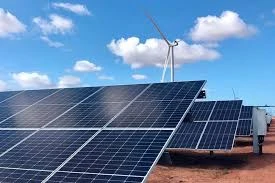Exploring Benefits of Bifacial Dual Glass Solar Panels for Enhanced Efficiency and Durability
The Evolution and Benefits of Bifacial Dual Glass Solar Panels
In recent years, the demand for renewable energy sources has surged as the world seeks sustainable solutions to combat climate change. Among these innovations, bifacial dual glass solar panels have emerged as a groundbreaking technology that maximizes solar energy capture while ensuring durability and efficiency. This article explores the evolution, advantages, and implementation of bifacial dual glass solar panels, shedding light on their pivotal role in the renewable energy landscape.
Understanding Bifacial Dual Glass Technology
Bifacial solar panels utilize photovoltaic cells on both sides of the panel, allowing them to capture sunlight from both the front and rear surfaces. Traditional solar panels only absorb light from one side, which limits their efficiency. The dual glass design replaces the conventional backsheet with a glass layer, enhancing the structural integrity of the panel and enabling it to harness reflected sunlight from the ground or surrounding surfaces.
This technology stems from a need for more efficient and robust solar solutions. Early solar panels were often susceptible to environmental damage, such as moisture ingress and UV degradation. The introduction of dual glass technology addresses these concerns, providing a protective layer that enhances the lifespan and performance of the panels.
Advantages of Bifacial Dual Glass Solar Panels
1. Increased Energy Generation Bifacial panels can produce up to 20-30% more energy compared to their monofacial counterparts. This is due to the ability to capture reflected sunlight, especially in installations with high albedo surfaces (e.g., snow, sand, or light-colored materials). As a result, bifacial technology significantly improves the overall energy yield of solar installations.
2. Durability and Longevity The dual glass construction enhances the durability of solar panels, protecting them from environmental factors such as hail, moisture, and UV radiation. Many manufacturers offer warranties of 25 years or more for bifacial panels, underscoring their longevity and reliability in various weather conditions.
3. Lower Levelized Cost of Energy (LCOE) With increased energy output and reduced degradation, the LCOE for bifacial dual glass panels is often lower than traditional panels. This cost-effectiveness makes bifacial technology an attractive option for large-scale solar projects, as it allows developers to maximize returns on investment.
bifacial dual glass

4. Versatility in Installation Bifacial panels can be installed in a variety of applications, from ground-mounted systems to rooftop installations. They can also be paired with tracking systems that follow the sun's path to further enhance energy capture. Additionally, their aesthetic appeal—often featuring sleek glass designs—makes them suitable for urban and residential environments.
Environmental Impact
The environmental benefits of bifacial dual glass panels extend beyond energy generation. The longer lifespan and durability of these panels reduce the frequency of replacements, consequently lowering waste and resource consumption. Moreover, the ability to continually harness solar energy contributes significantly to reducing greenhouse gas emissions and reliance on fossil fuels.
The Future of Bifacial Technology
As the global shift towards renewable energy accelerates, bifacial dual glass technology is poised to play an integral role in achieving energy goals. Ongoing research and development aim to enhance the efficiency and performance of these panels further. Innovations in materials, manufacturing processes, and integration with smart technologies will likely expand the applications and benefits of bifacial solar systems.
Furthermore, governments and organizations worldwide are increasingly recognizing the importance of sustainable energy solutions. Supportive policies and incentives for solar energy adoption will further drive the growth of bifacial technology. It is anticipated that the market for bifacial dual glass panels will continue to expand as more consumers and businesses seek to harness clean energy effectively.
Conclusion
Bifacial dual glass solar panels represent a significant advancement in solar technology, combining efficiency, durability, and aesthetic appeal. Their ability to generate more energy and lower costs positions them as a crucial element in the transition to renewable energy. As technology advances and the demand for sustainable energy solutions grows, bifacial dual glass panels are set to redefine the future of solar power, contributing to a greener and more sustainable planet. With their promising attributes, these panels offer a bright outlook for the solar industry and environmental stewardship alike.
-
String Solar Inverter: The High-Efficiency Solution for Smart Solar EnergyNewsJul.14,2025
-
Revolutionizing Rooftop Energy with the Power of the Micro Solar InverterNewsJul.14,2025
-
Power Independence with Smart Off Grid Solar Inverter SolutionsNewsJul.14,2025
-
On Grid Solar Inverter: Powering the Future with Smart Grid IntegrationNewsJul.14,2025
-
Monocrystalline Solar Panels: High-Efficiency Power for the Future of Clean EnergyNewsJul.14,2025
-
Bifacial Solar Panel: A Smarter Investment for Next-Generation Energy SystemsNewsJul.14,2025







